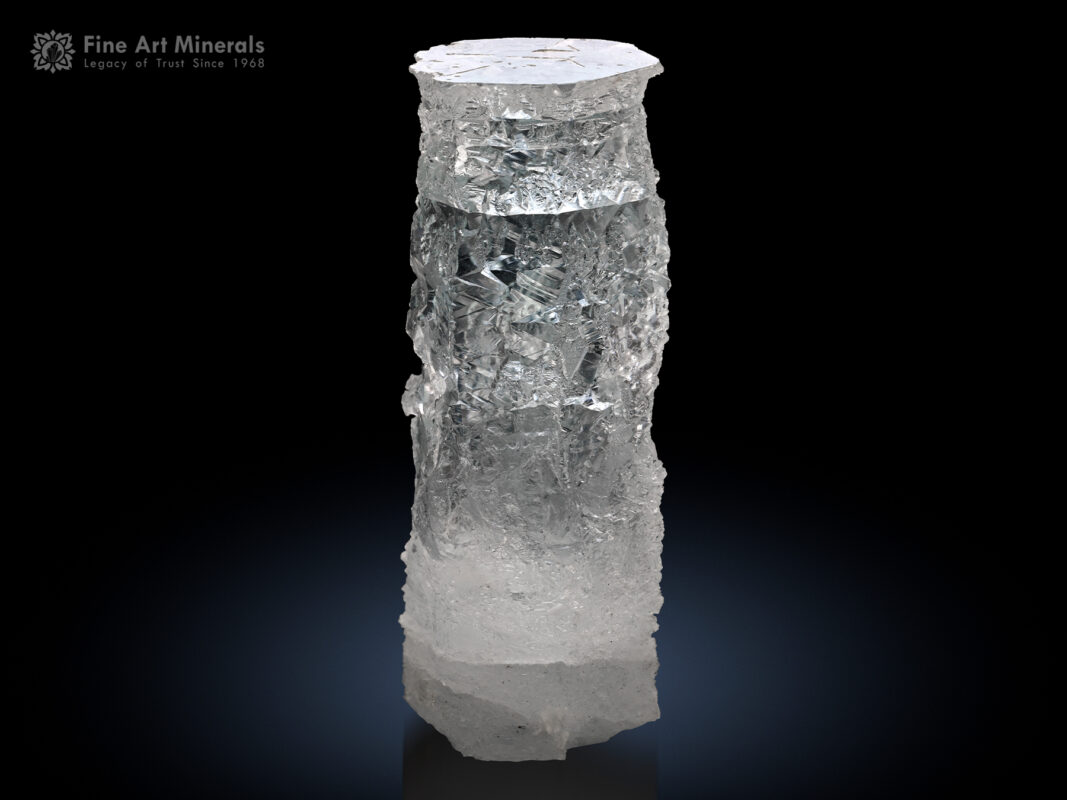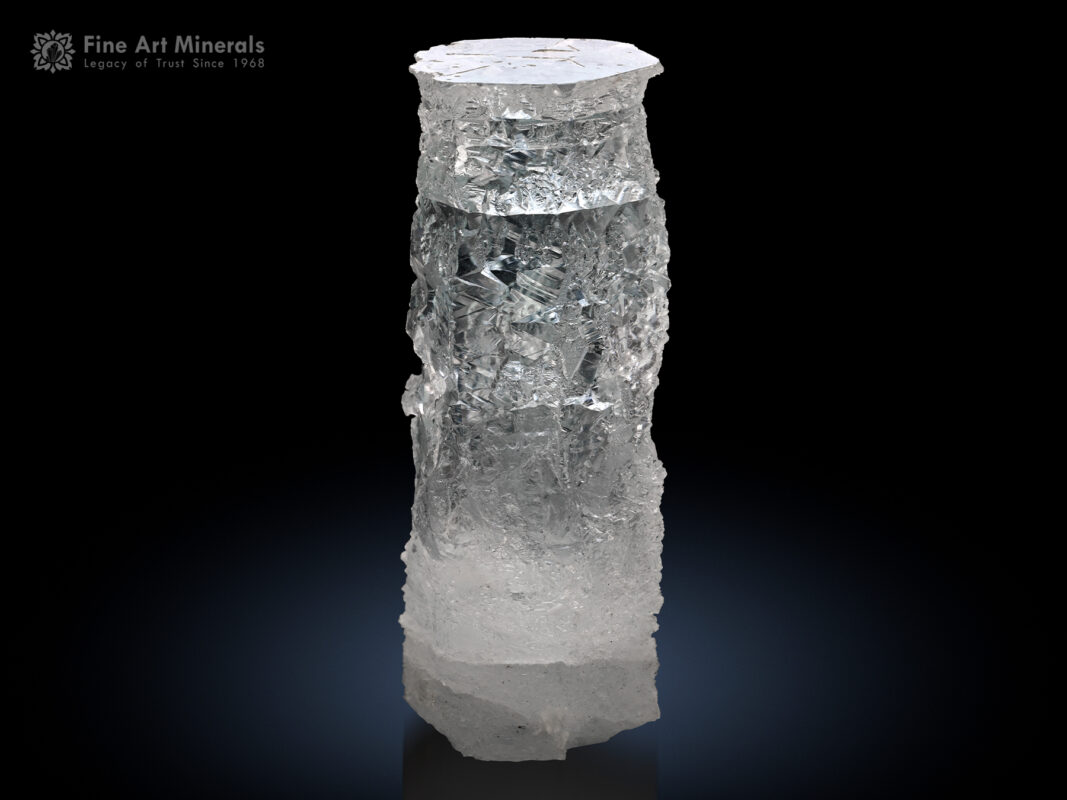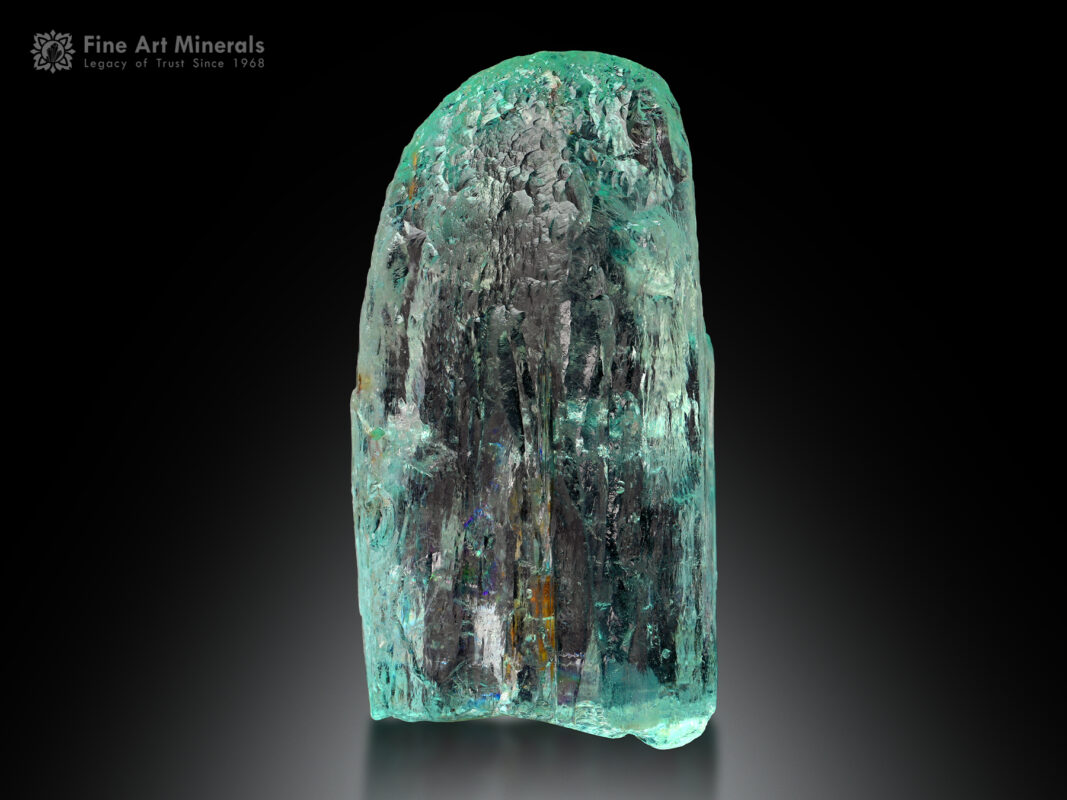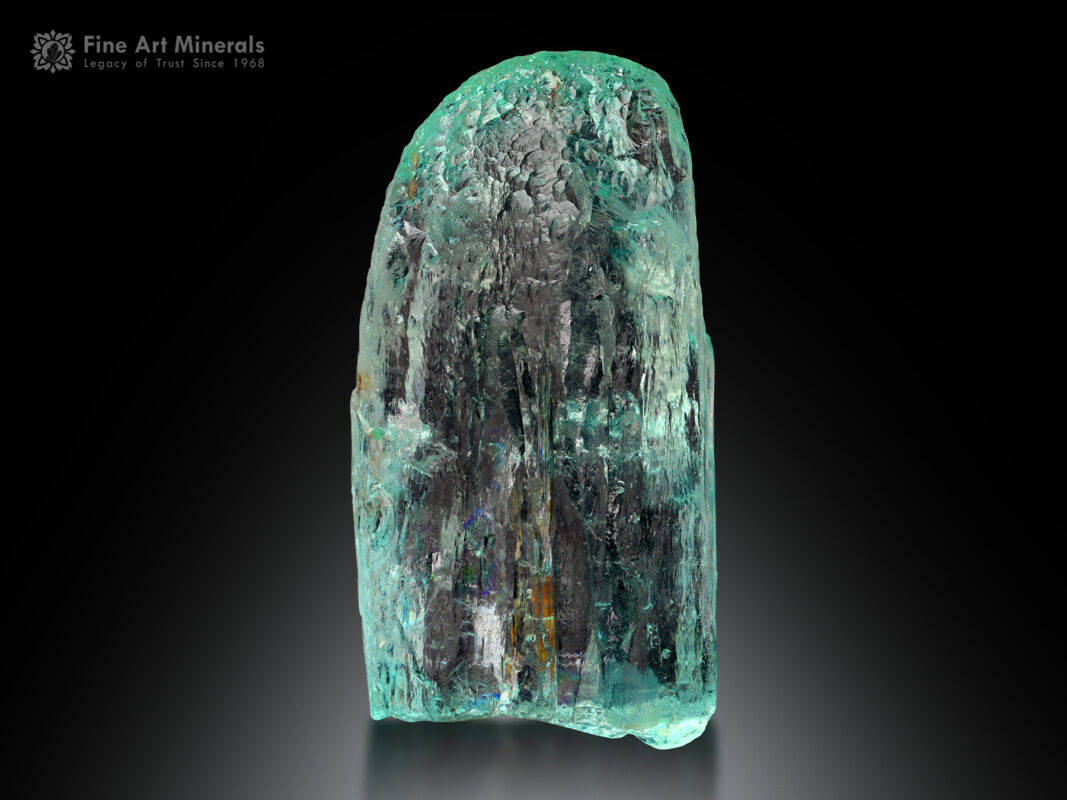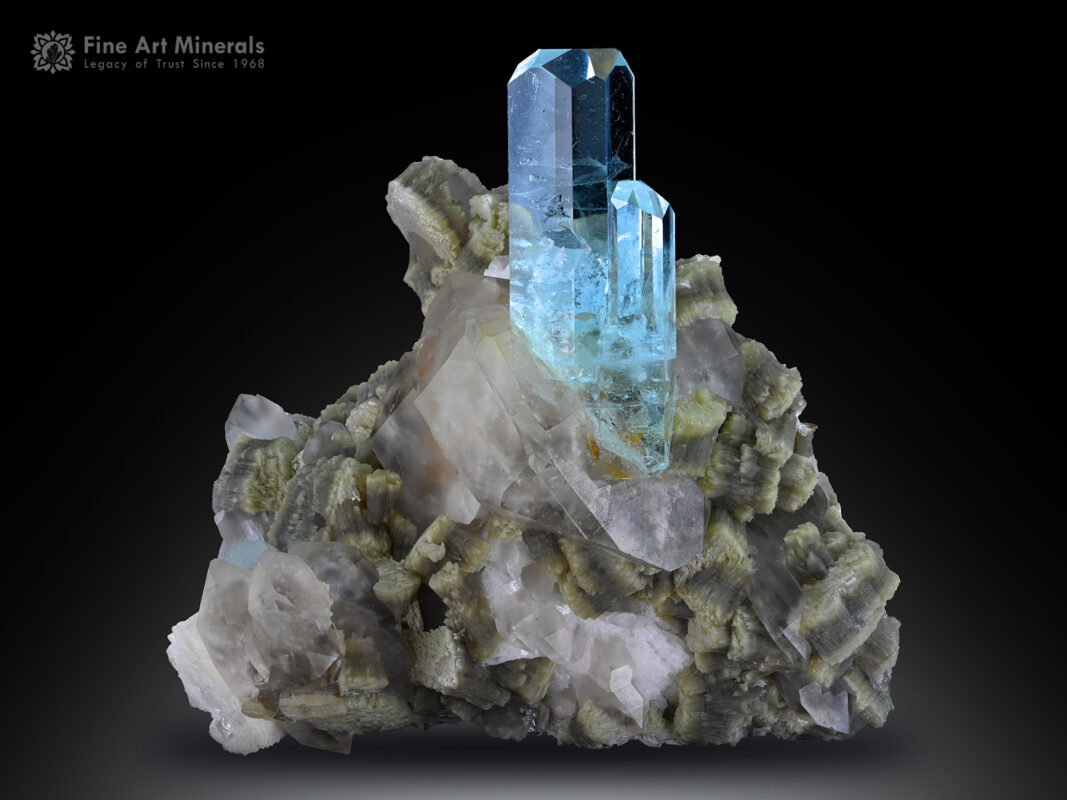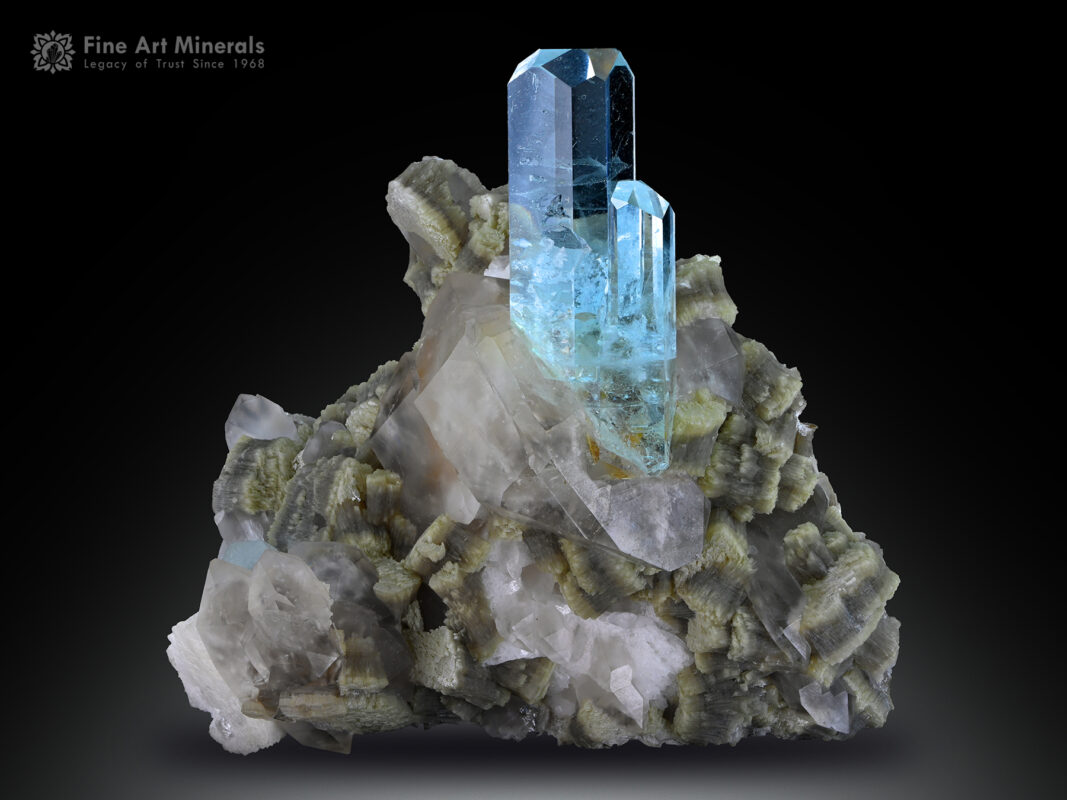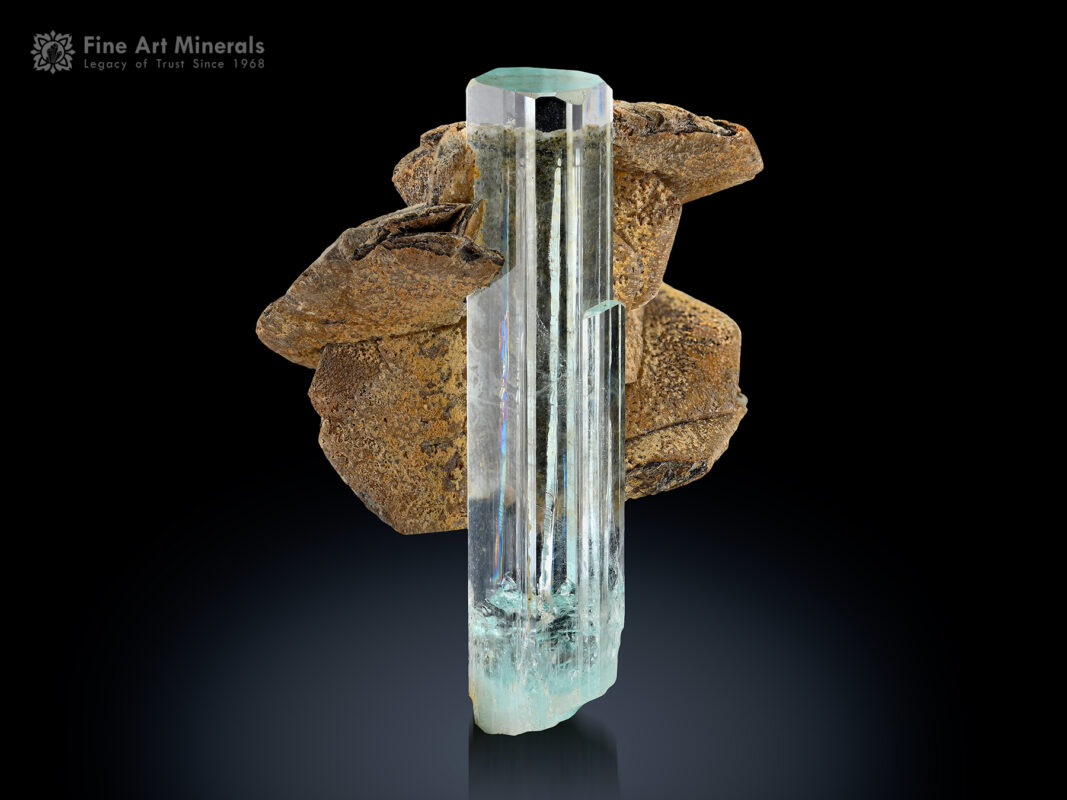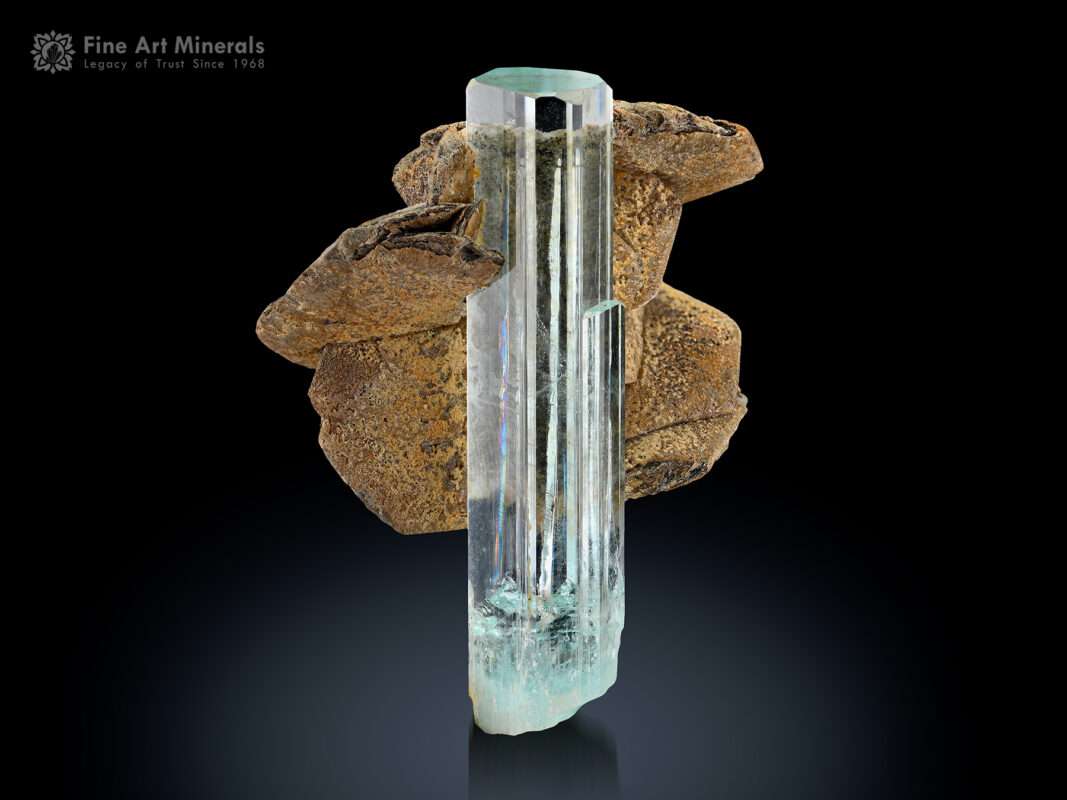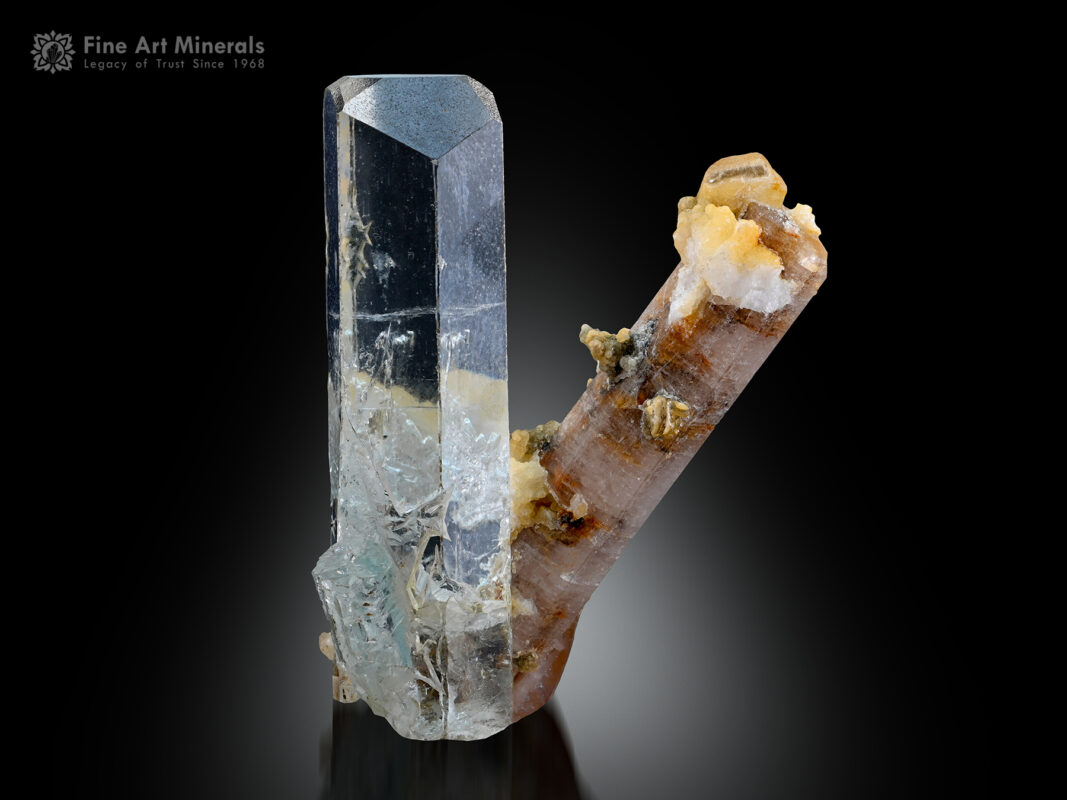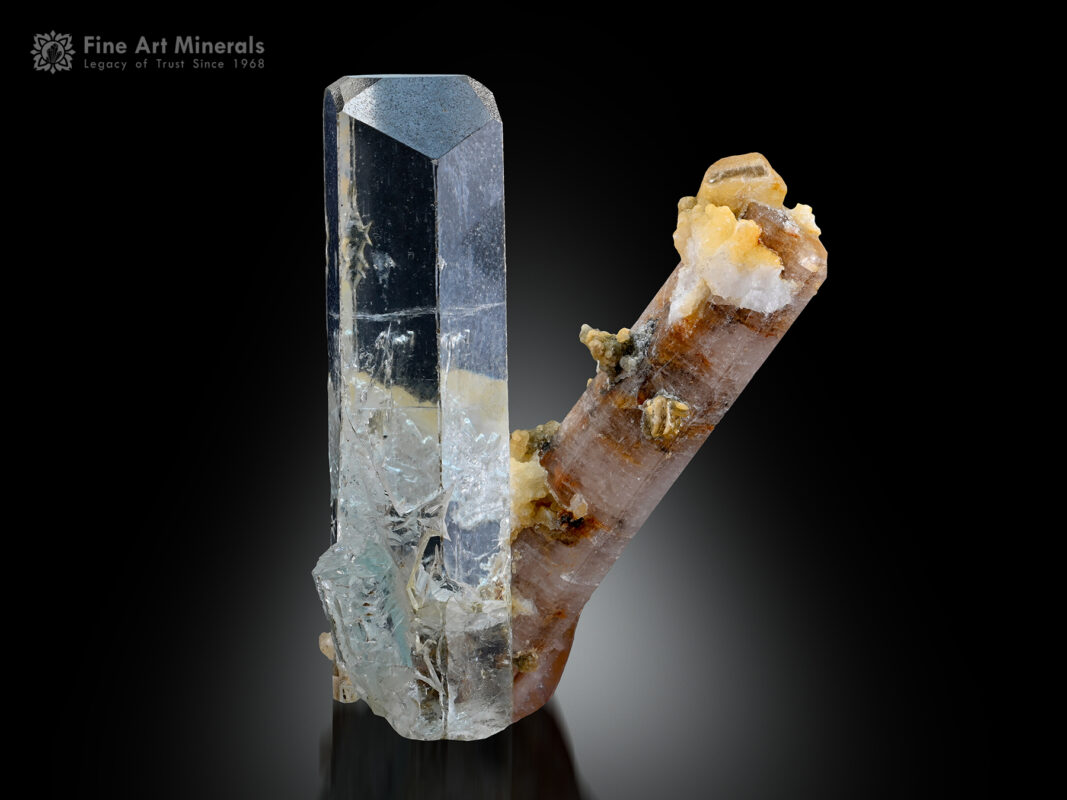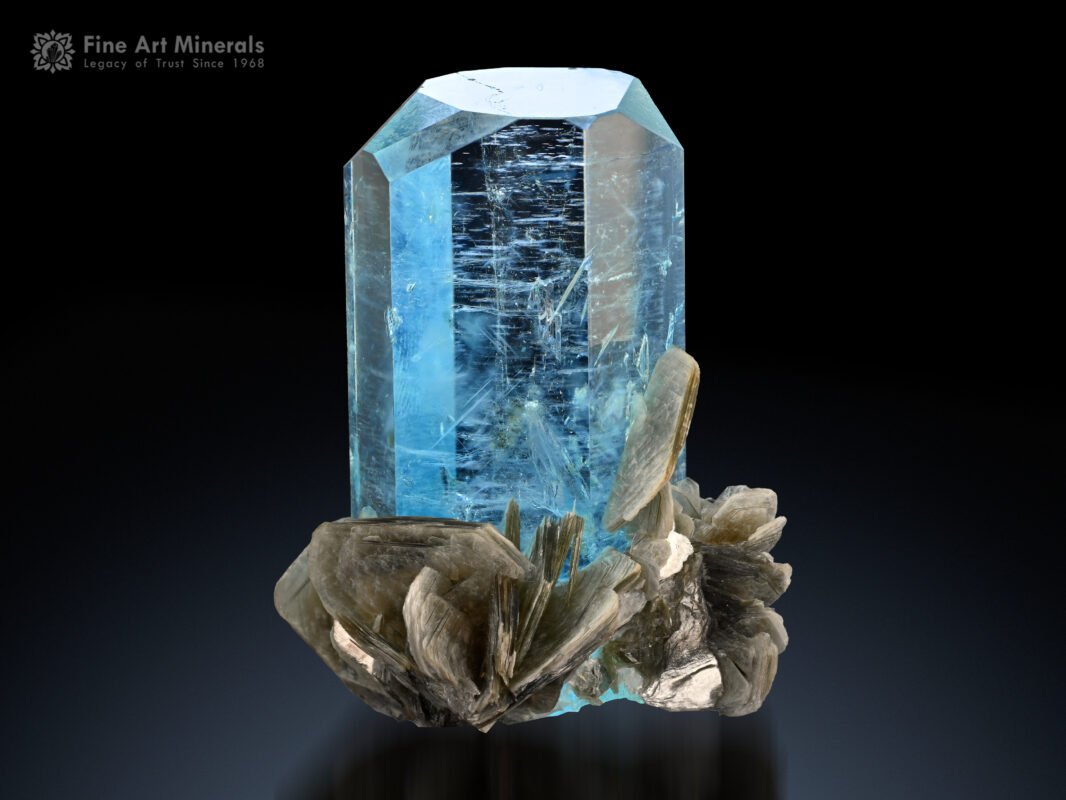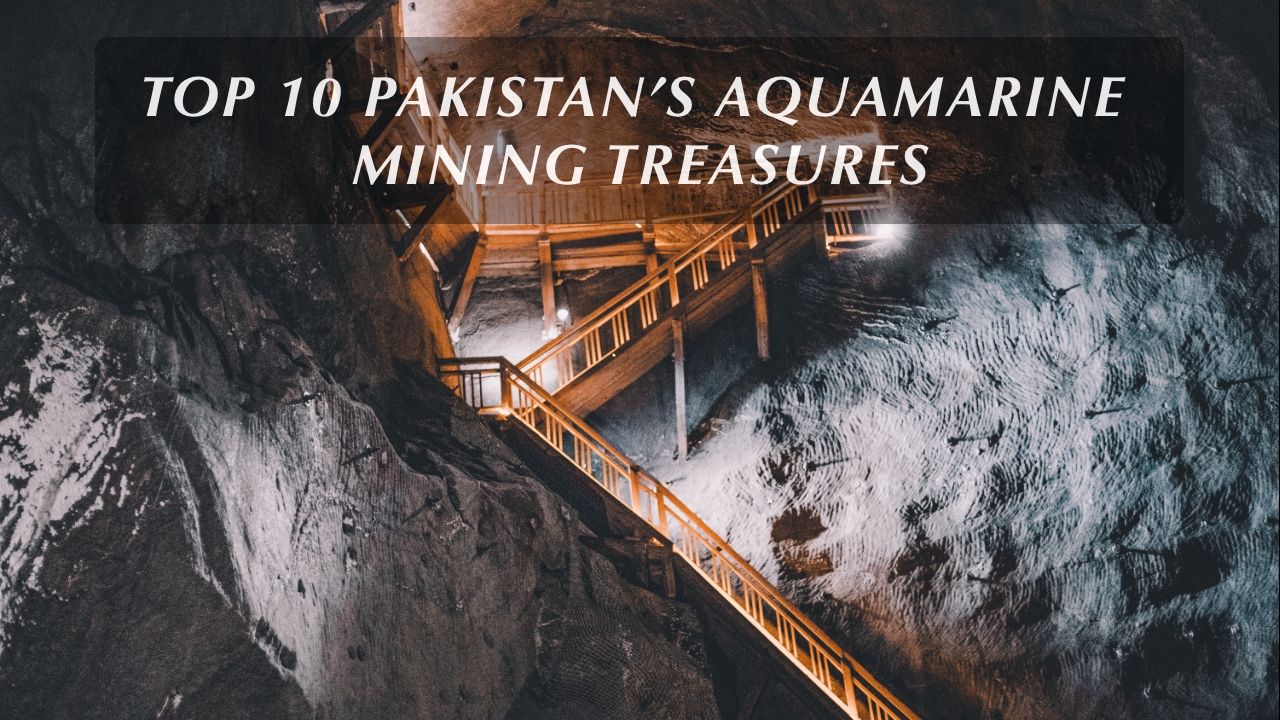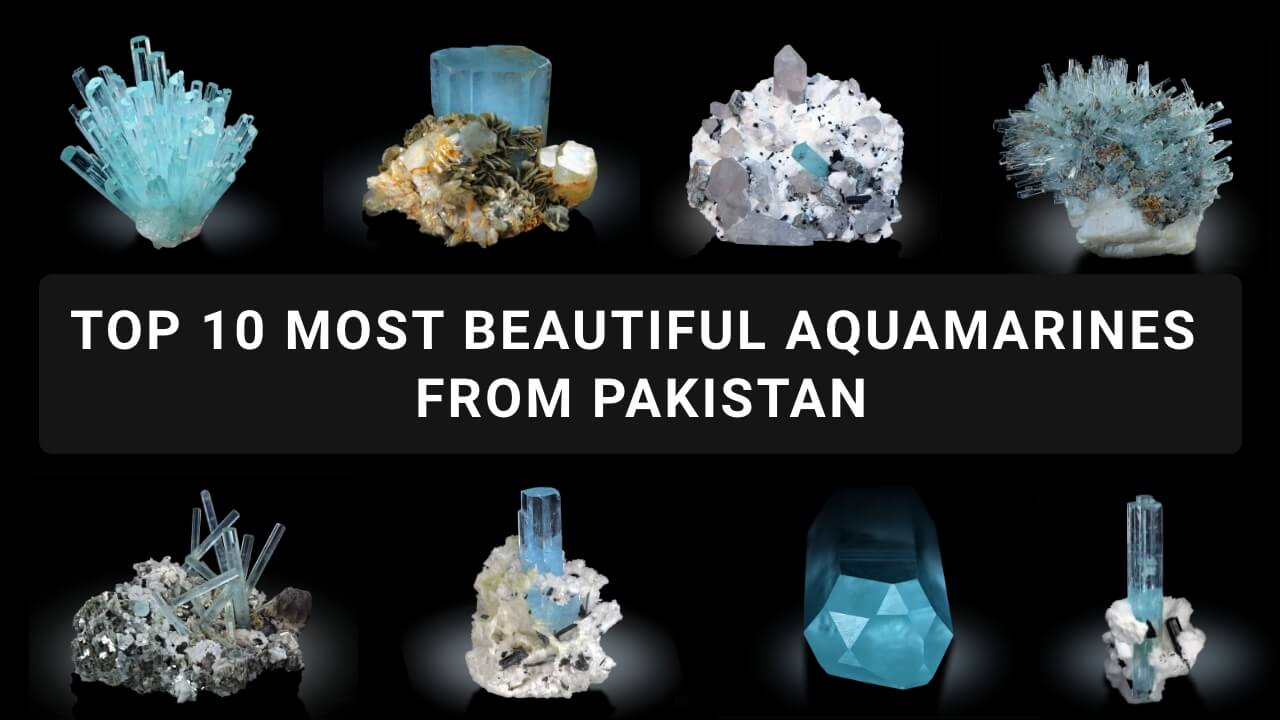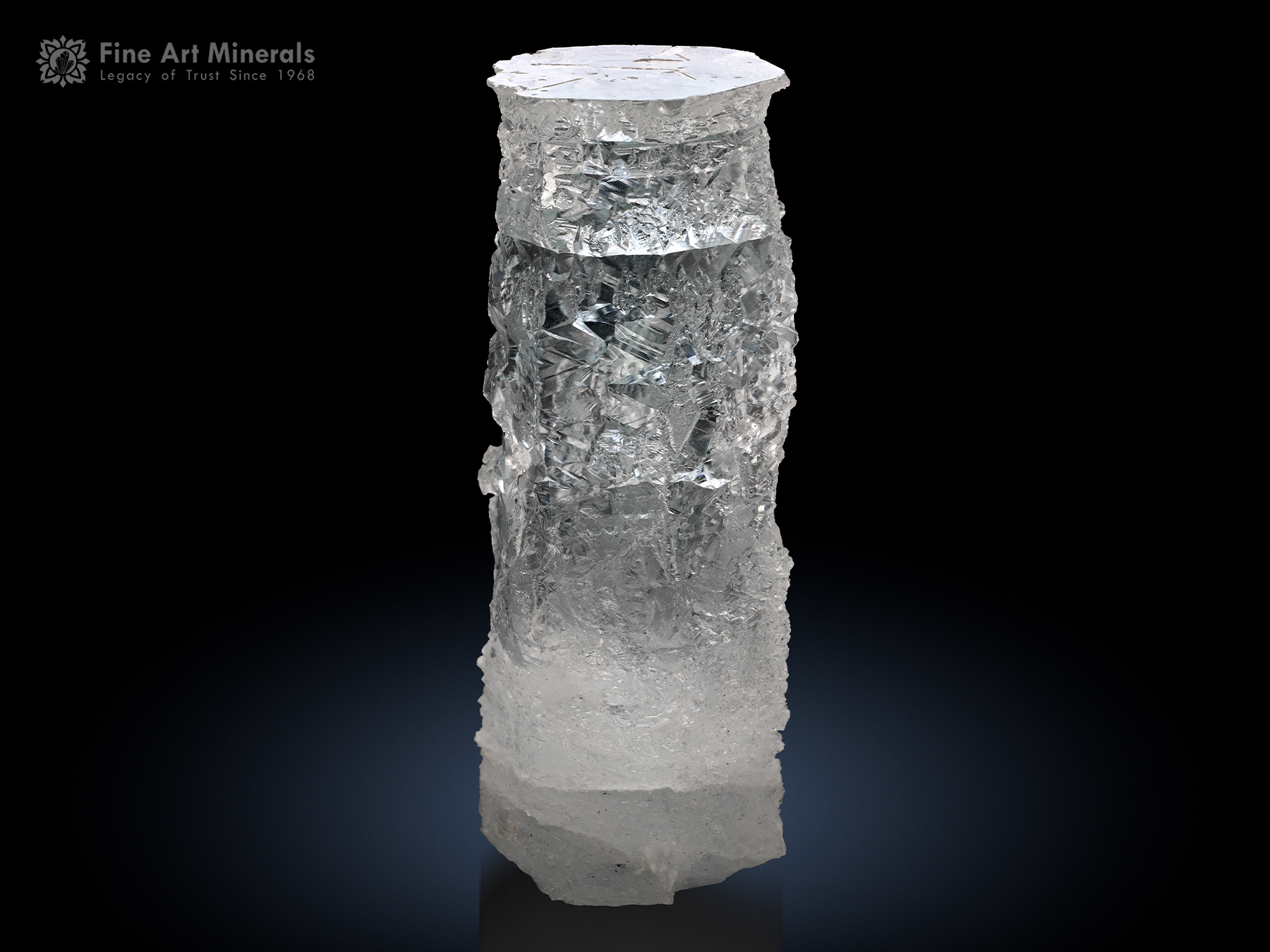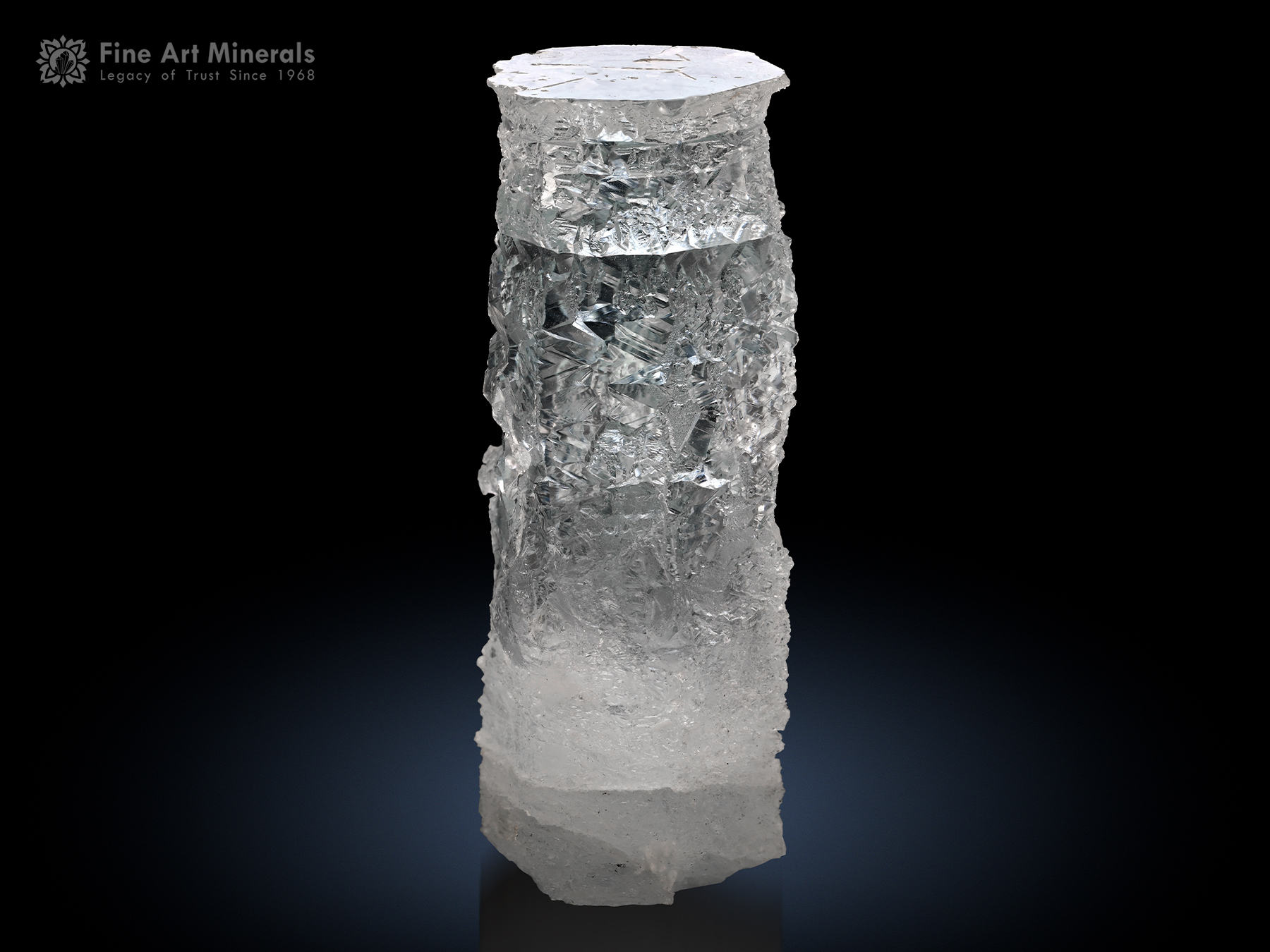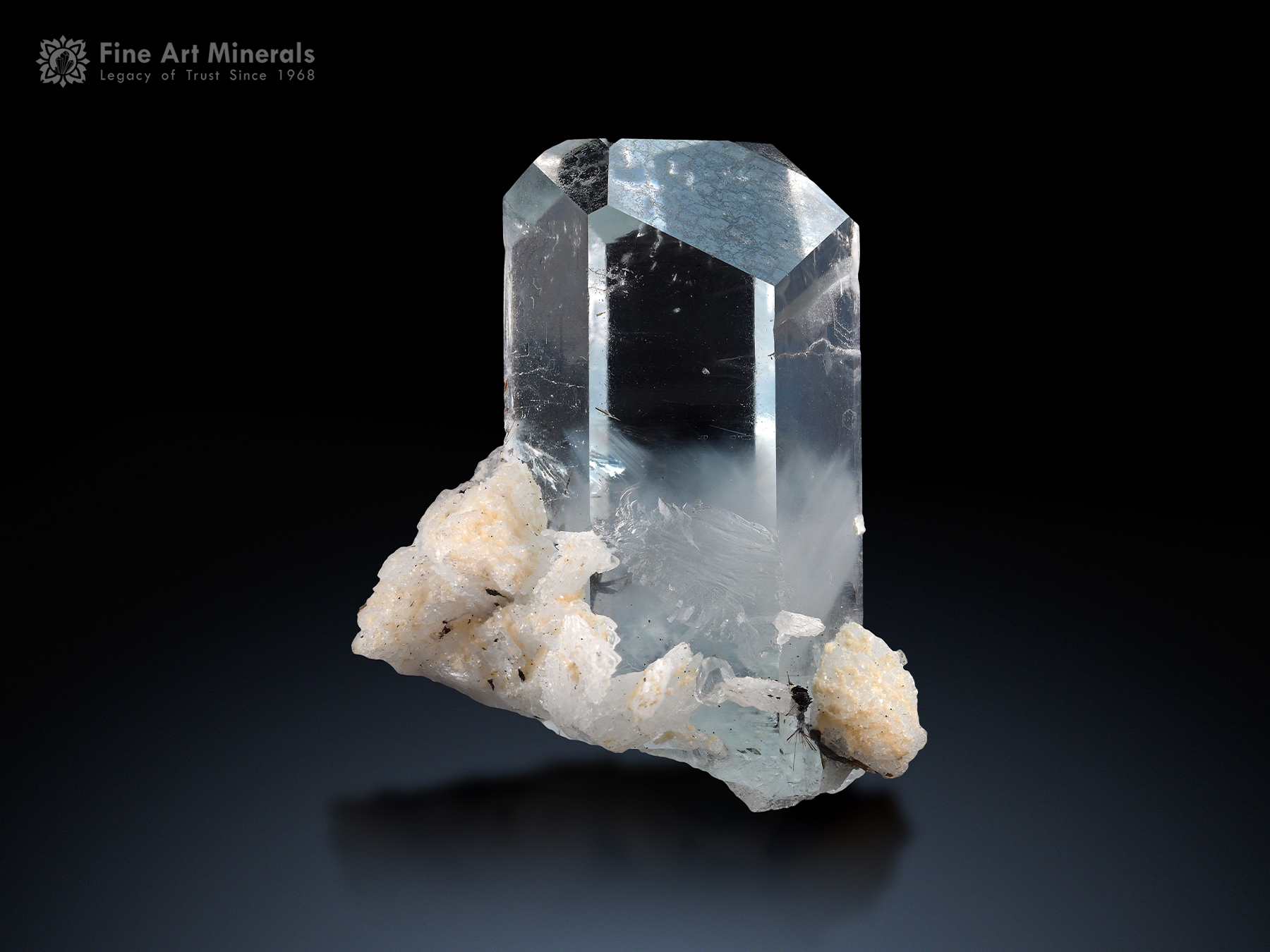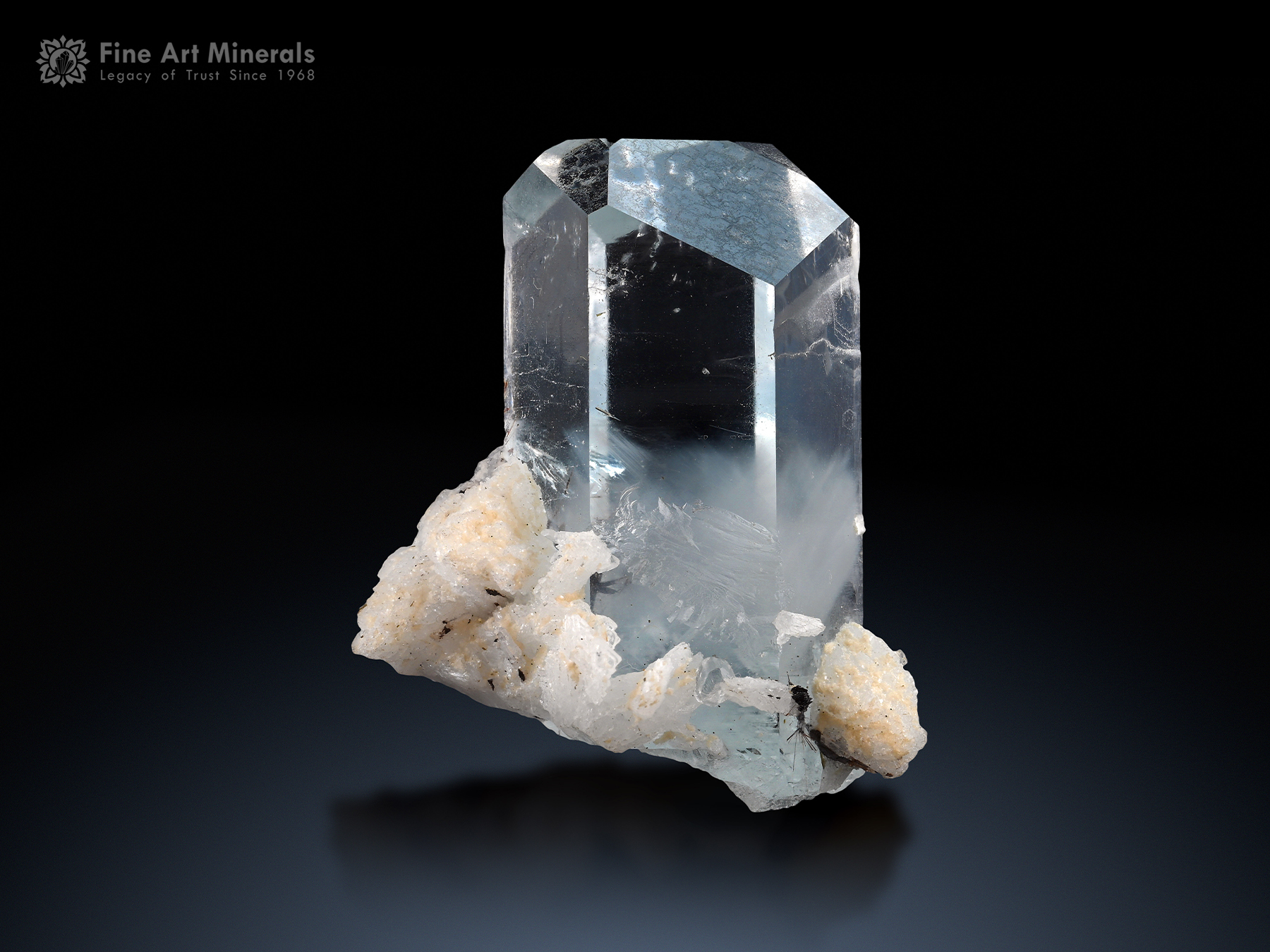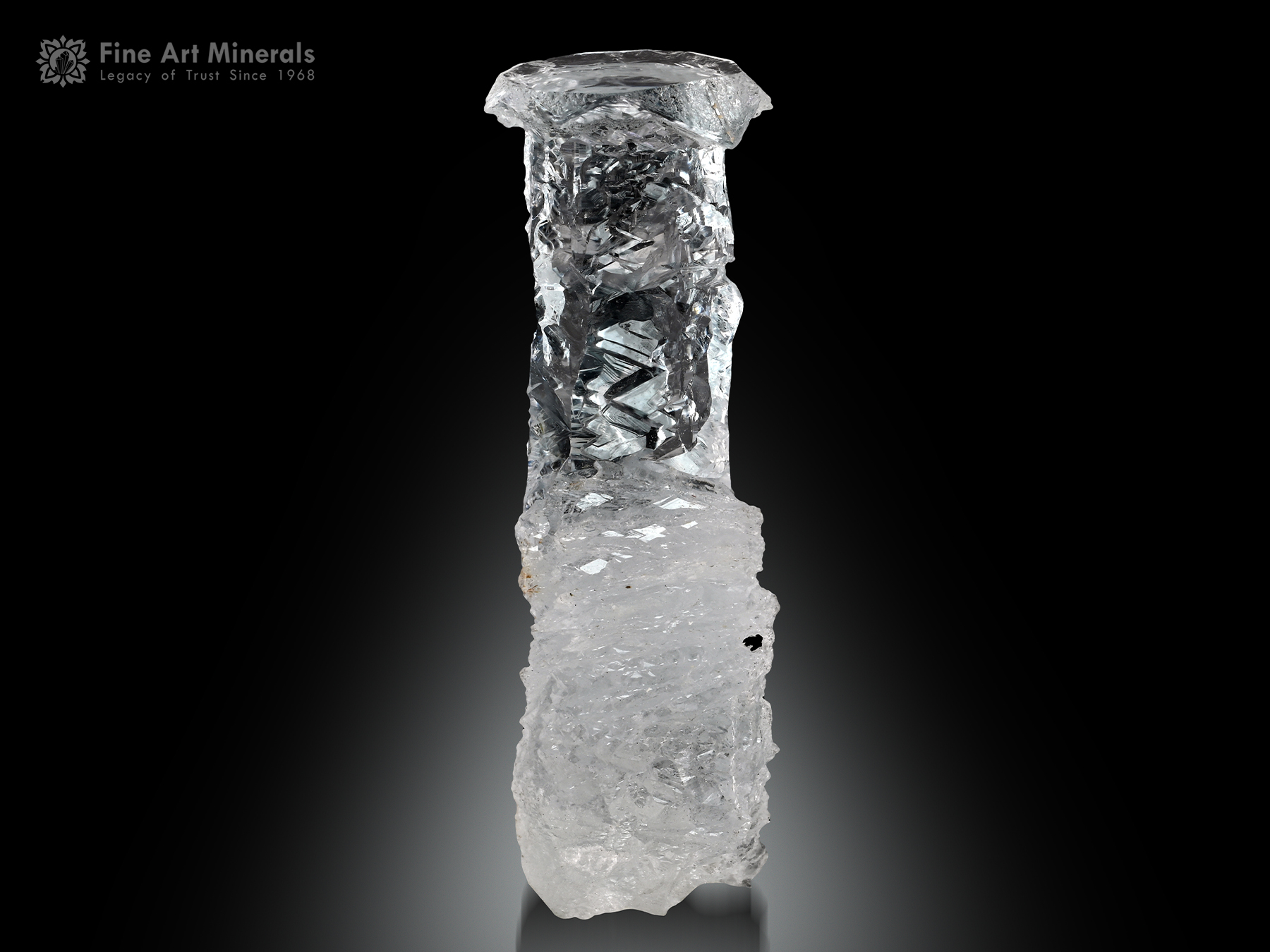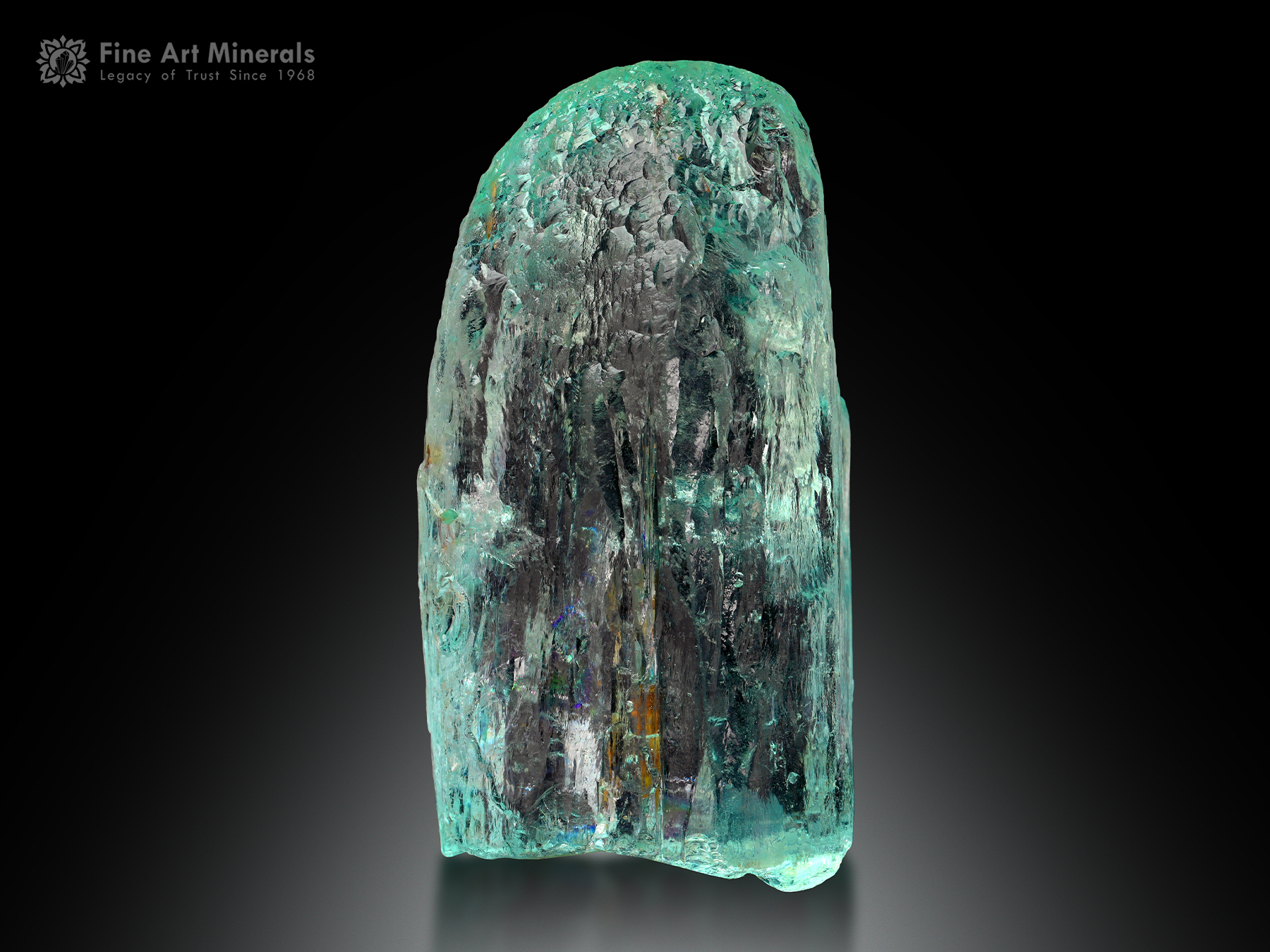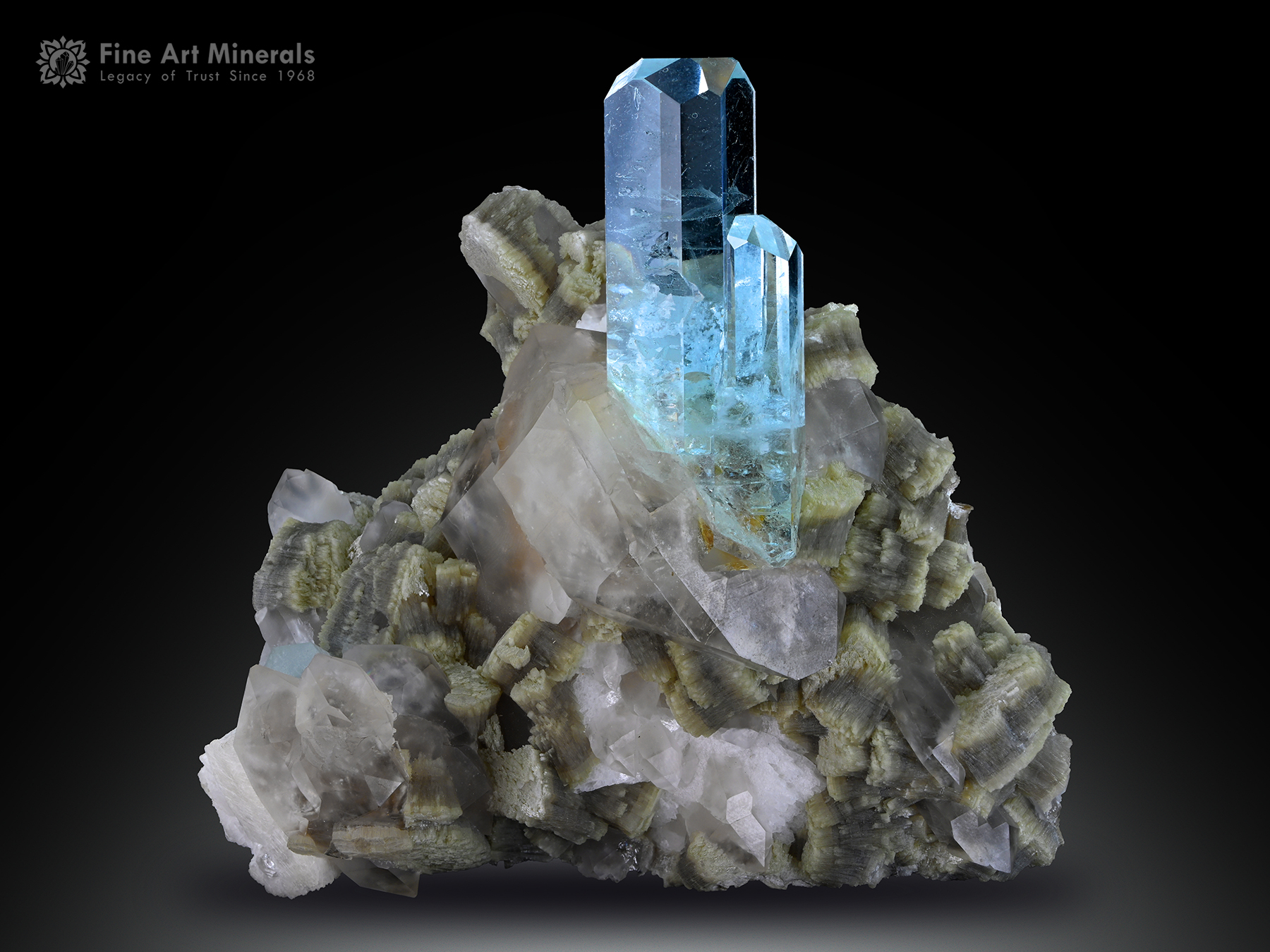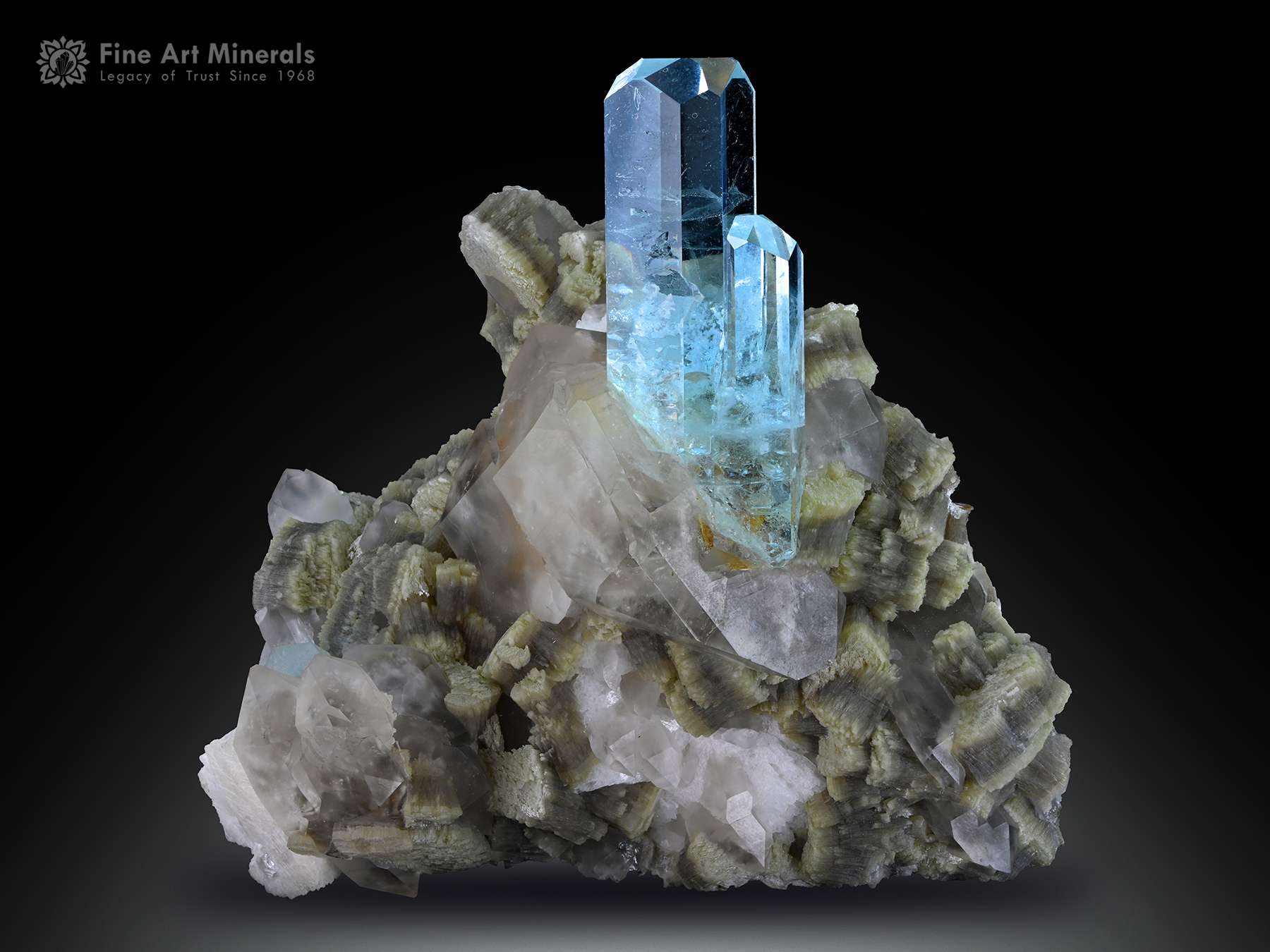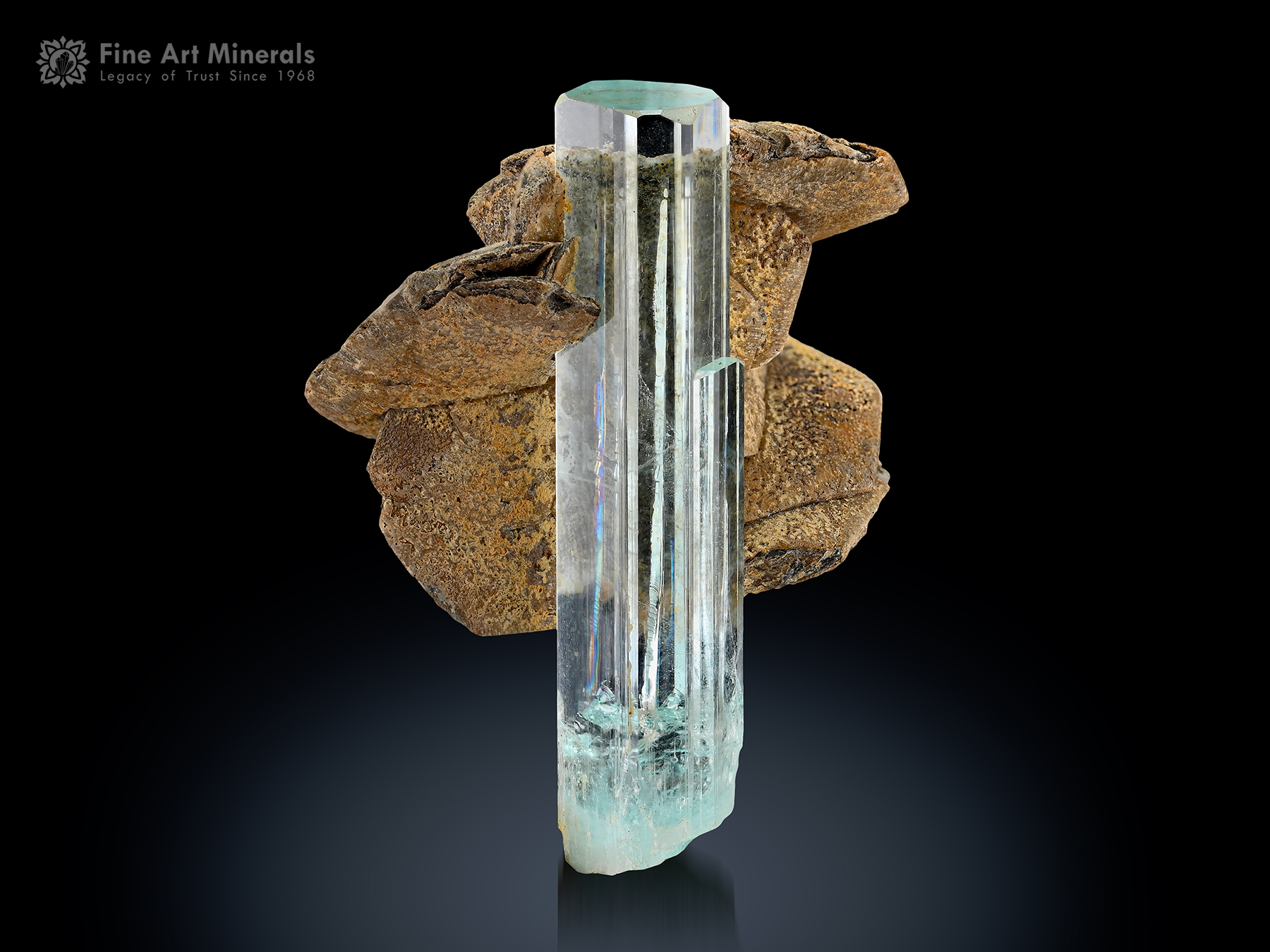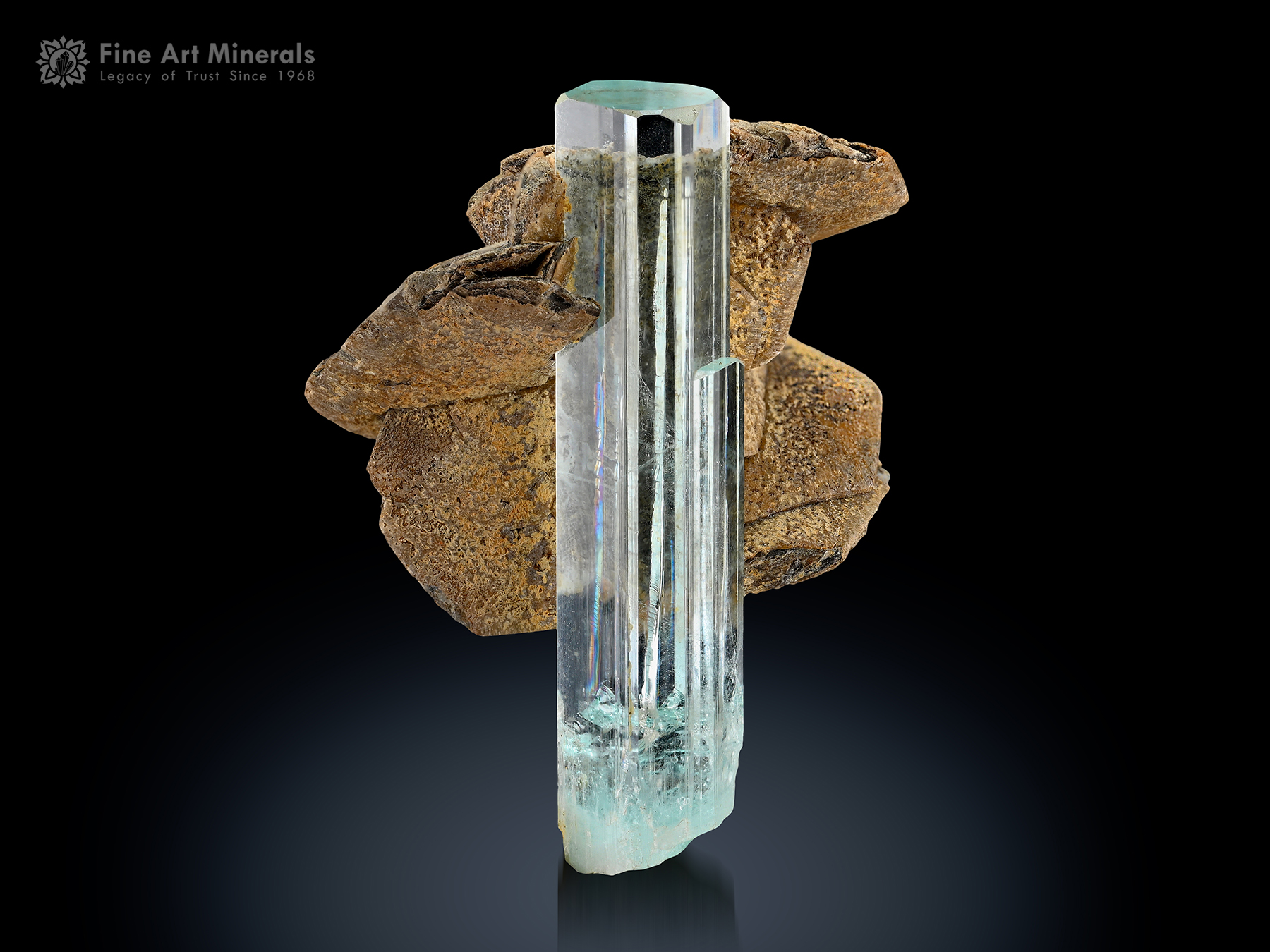Welcome to the mesmerizing world of Aquamarine from Pakistan, a captivating blog that promises to take you on an awe-inspiring journey through the depths of Pakistan’s aquamarine treasures.
Here, we will unravel the secrets behind this precious mineral found in the heart of South Asia Pakistan.
Journey with us as we delve into the depths of Pakistan’s aquamarine deposits, uncovering the secrets of its formation, the art of extraction, and the cultural significance that has endured through the centuries.
Join us as we unravel the geological marvels, meet the artisans who breathe life into raw stones, and understand why this mineral is cherished in the hearts of gem enthusiasts and collectors alike.
Whether you are an ardent gemstone lover, a history enthusiast, or simply curious about the beauty concealed beneath the surface, this journey promises to be enthralling.
So, let us venture forth into the iridescent world of aquamarine from Pakistan, where the brilliance of nature’s finest craftsmanship awaits to be discovered.
Table of Contents
ToggleDefinition and Characteristics of Aquamarine
Aquamarine, derived from the Latin words “aqua” meaning water, and “marin” meaning the sea, perfectly captures the essence of this remarkable mineral.
Renowned for its delicate blue-to-blue-green hues, aquamarine has long been associated with the calming tranquility of the ocean, evoking a sense of serenity and purity.
Aquamarine belongs to the beryl family of minerals, which also includes emerald, morganite, and heliodor. Its color variations can range from pale blue to a more saturated blue-green, reminiscent of the serene waters from which it draws inspiration.
This mineral owes its captivating color to trace amounts of iron present within its crystal structure.
One of the defining characteristics of aquamarine is its remarkable clarity. It often exhibits exceptional transparency, allowing light to pass through with remarkable brilliance.
Its crystal structure, which belongs to the hexagonal system, lends itself to remarkable mineral clarity, enabling the gem to be faceted into stunning cuts that accentuate its natural beauty.
In terms of hardness, aquamarine ranks at 7.5 to 8 on the Mohs scale. Although not as hard as some gemstones like diamonds, it still possesses considerable durability and can withstand everyday wear.
This quality, along with its exquisite color, makes aquamarine a popular choice for jewelry, particularly in rings, earrings, necklaces, and bracelets.
Aquamarine’s luster, or the way it reflects light, is vitreous, imparting a subtle and inviting glow to the gem. Its refractive index, a measure of how light bends as it enters and exits the gemstone, ranges from 1.564 to 1.596, contributing to its brilliance and sparkle.
While aquamarine is predominantly known for its blue and blue-green varieties, it can also exhibit pleochroism—an optical phenomenon where the mineral displays different colors when viewed from different angles.
This characteristic adds depth and intrigue to the gem, as shades of blue, green, and even hints of yellow can be observed under varying lighting conditions.
The size of aquamarine crystals can vary significantly, with some specimens reaching impressive dimensions.
These larger crystals offer lapidaries and gem cutters the opportunity to create sizable and awe-inspiring faceted gemstones, making aquamarine a favorite among gem collectors and enthusiasts.
Beyond its captivating physical attributes, aquamarine has been embraced for its symbolic meanings and perceived metaphysical properties.
Whether cherished for its striking beauty, its historical significance, or its alleged spiritual qualities, aquamarine continues to captivate hearts around the world.
From adorning royalty to being cherished in personal collections, this aquatic mineral from Pakistan has solidified its place as a cherished and beloved treasure.
As we embark on this journey through the depths of aquamarine’s allure, we shall uncover the origins of Pakistan’s aquamarine deposits, delve into the remarkable geological processes that shape these minerals, and discover the artistry that transforms raw aquamarine into breathtaking jewelry.
Importance and Popularity of Aquamarine as a Gemstone
Aquamarine from Pakistan has emerged as a gem of immense importance and popularity in the world of precious minerals.
Renowned for its captivating blue and blue-green hues, this mineral allure lies in its exceptional beauty and transparency.
Mined from the rugged terrains of Pakistan, these aquamarines exhibit superior clarity, making them ideal for exquisite jewelry creations.
Beyond their visual appeal, aquamarines from Pakistan hold deep cultural and historical significance.
Revered by ancient civilizations for its symbolism of tranquility and protection, the mineral continues to be cherished as a talisman of emotional balance and serenity.
Pakistan’s aquamarine industry has earned global recognition, garnering demand from collectors, gemologists, and jewelry designers worldwide.
The country’s commitment to ethical sourcing and sustainable mining practices adds to its appeal, resonating with conscious consumers.
Aquamarine from Pakistan stands as an enchanting mineral, treasured for its extraordinary beauty, cultural significance, and ethical origins.
As it continues to adorn jewelry pieces and captivate hearts across the globe, the allure of this aquatic mineral remains undeniably potent.
Origins of Aquamarine in Pakistan


The captivating blue mineral Aquamarine has a unique place in the hearts of gem enthusiasts, and Pakistan is recognized for having abundant resources of this priceless stone.
Pakistan’s aquamarine may be attributed to its northern regions, particularly the mountainous regions of Gilgit-Baltistan and Khyber Pakhtunkhwa. The Karakoram Range and the Hindu Kush Mountains’ untamed and stunning landscape is what make these mining locations unique.
For miners looking for hidden riches in the dirt, these places offer a difficult yet rewarding environment.
Overview of the Geographical Regions Where Aquamarine is Found in Pakistan
In Pakistan, Aquamarine is predominantly found in the northern regions, particularly the mountainous areas of Gilgit Baltistan and Khyber Pakhtunkhwa.
These rugged and breathtaking places, such as the Hindu Kush Mountains and Karakoram Ranges provide a geological environment that encourages the formation of Aquamarine in pegmatite veins.
Pakistani Aquamarine is attractive and distinctive because of its difficult but rewarding terrain.
History of Aquamarine Mining in the Country
The history of aquamarine mining in Pakistan dates back centuries, with the mineral discovery in the northern regions.
The first recorded finding of aquamarine in Pakistan can be traced to the late 1950s in the Shigar Valley of Gilgit-Baltistan.
Renowned gemologist and mineralogist, Dr. Groat, named the gem “Shigar aquamarine” after its place of origin.
Over the years, the mining industry in the region has grown, with gem enthusiasts and miners uncovering the precious blue-green gem in the Karakoram Range and the Hindu Kush Mountains.
The country’s rugged terrain and challenging conditions have made aquamarine extraction arduous yet rewarding. Pakistan has since become a prominent global supplier of this enchanting gemstone, captivating jewelry lovers and collectors worldwide.
Famous Aquamarine Mines in Pakistan
Pakistan is renowned for its famous aquamarine mines, with notable locations primarily found in the northern regions.
The Shigar Valley in Gilgit-Baltistan is one of the most prominent areas, where aquamarine was first discovered in the late 1950s.
The mineral name “Shigar aquamarine” pays tribute to its place of origin. Additionally, the Hunza Valley in Gilgit-Baltistan is known for producing high-quality aquamarines with vivid blue hues.
Another notable mine is located in the Panjsher Valley of Afghanistan, which also yields aquamarine minerals that share similarities with those from the Pakistani mines.
These famous aquamarine mines in Pakistan have played a significant role in establishing the country as a major global supplier of this captivating and sought-after mineral.
Highlighting Notable Aquamarine Mines in Pakistan
1.Nyet Bruk, Braldu Valley, Shigar District, Gilgit Baltistan
The Nyet Bruk Mine, located in this enchanting Shigar district of Gilgit Baltistan, is a significant source of aquamarine that has captivated gem enthusiasts and collectors worldwide.
The aquamarine mines at Nyet Bruk have become synonymous with exquisiteness, attracting gem enthusiasts from all corners of the globe.
The remote location adds to their allure as they are nestled amongst towering snow-capped peaks and pristine glaciers. This mine has gained international recognition for its abundant deposits of aquamarine.
2.Chumar Bakhoor Mine (Sumayar Valley, Nagar District, Gilgit-Baltistan)
The Chumar Bakhoor Mine, located at an elevation of 5,520 meters in the Sumayar Valley of Nagar District, Gilgit-Baltistan, Pakistan, is a treasure trove for aquamarine enthusiasts and gemstone connoisseurs.
Known for its exquisite collection of aquamarines, this mine has gained international recognition for its stunningly beautiful and rare gems.
The region’s rich geological composition and favorable conditions have made it an ideal source for some of the world’s finest aquamarines, captivating collectors and jewelry designers alike.
3.Haramosh Mine (Roundu District, Gilgit-Baltistan)
The Haramosh Valley in the Roundu District of Gilgit-Baltistan is renowned for its breathtaking natural beauty and rich mineral resources.
Among these resources, the Aquamarine Mines hold a prominent position, captivating gemstone enthusiasts from around the world.
With its stunning blue hues and remarkable clarity, aquamarine has become highly sought after in the jewelry industry.
Aquamarine Mining and Extraction


Mining Techniques
Mining techniques for aquamarine involve extracting the mineral from the Earth’s crust in Pakistan’s mountainous regions. Miners use hand tools and explosives to access the gem-bearing rocks in pegmatite veins.
Once obtained, the rough aquamarine is transported for further processing and cutting, unveiling its captivating beauty.
These mining techniques require skilled labor and careful handling to ensure the minerals are safely extracted, contributing to the allure of aquamarine in the world of jewelry and gem enthusiasts.
Challenges in Extraction
Mining aquamarine poses several challenges due to the remote and rugged terrain.
Harsh weather conditions and difficult access add to the complexity. Miners also face safety risks during extraction and transportation. Ensuring sustainable mining practices is crucial to preserve the environment and minimizing ecological impact.
Overcoming these challenges requires skilled labor, advanced equipment, and responsible mining practices to obtain these cherished minerals.
Sustainability and Environmental Concerns
Mining aquamarine raises sustainability and environmental concerns due to its impact on the fragile ecosystems of mountainous regions.
Unplanned or irresponsible mining practices can lead to deforestation, habitat destruction, and soil erosion.
Improper waste disposal can contaminate water sources and harm wildlife. To address these concerns, responsible mining practices are essential.
This includes implementing reclamation plans to restore the land after mining, using eco-friendly equipment, and reducing energy consumption. Promoting sustainable mining not only preserves the environment but also ensures the long-term availability of aquamarine while fostering eco-consciousness among gemstone enthusiasts and the mining industry.
Physical Properties of Aquamarine
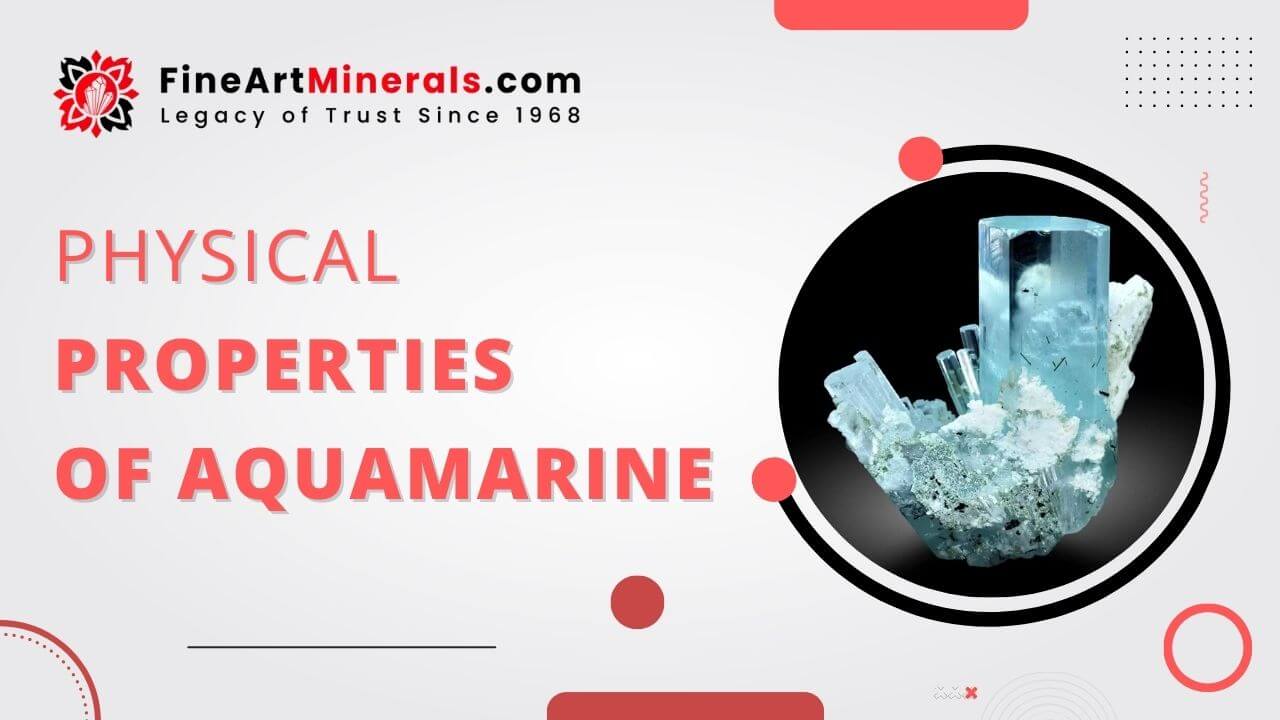

Color Variations and Factors Affecting the Color
Aquamarine, a mesmerizing gemstone of the beryl family, exhibits a captivating range of blue hues, from pale sky-blue to intense blue-green shades. The gem’s color variations are influenced by several factors, primarily iron impurities within the crystal lattice.
Higher iron content can result in deeper blue tones, while lower iron levels lead to lighter blue shades. Traces of other elements, such as chromium and vanadium, may affect the gem’s coloration.
The presence of these impurities and the gem’s transparency contribute to its overall color intensity and allure, making each aquamarine a unique and cherished gem in the world of fine jewelry.
Crystal Structure and Cleavage of Aquamarine
Aquamarine gemstones possess a hexagonal crystal structure, which is a characteristic feature of beryl minerals. This crystal structure contributes to the gem’s excellent durability and hardness, scoring 7.5 to 8 on the Mohs scale.
However, despite its hardness, aquamarine exhibits poor to indistinct cleavage. Cleavage refers to the tendency of a mineral to break along specific planes of weakness.
In aquamarine, these planes are not well-defined, making the gem relatively resistant to breakage.
This combination of a robust crystal structure and limited cleavage enhances the gem’s suitability for use in various jewelry designs, ensuring it maintains its captivating beauty for generations to come.
Chemical Properties of Aquamarine Gemstones
Aquamarine, a captivating gemstone of the beryl family, boasts intriguing chemical properties that contribute to its allure.
Its chemical composition is Be3Al2(Si6O18), with a hexagonal crystal structure forming prismatic crystals.
Notably, aquamarine exhibits excellent stability and minimal sensitivity to heat and light, making it suitable for various jewelry settings.
In chemical reactions, aquamarine remains relatively inert, ensuring its long-lasting beauty and durability.
Gemologists perform various tests on aquamarine to assess its authenticity and quality, including refractive index measurements, specific gravity determination, and spectral analysis.
These tests help confirm the gemstone’s identity, distinguishing it from imitations or synthetics.
The unique combination of its chemical properties makes aquamarine an admired gem, adorning jewelry pieces that stand the test of time and enchant jewelry enthusiasts worldwide.
Cutting and Polishing of Aquamarine
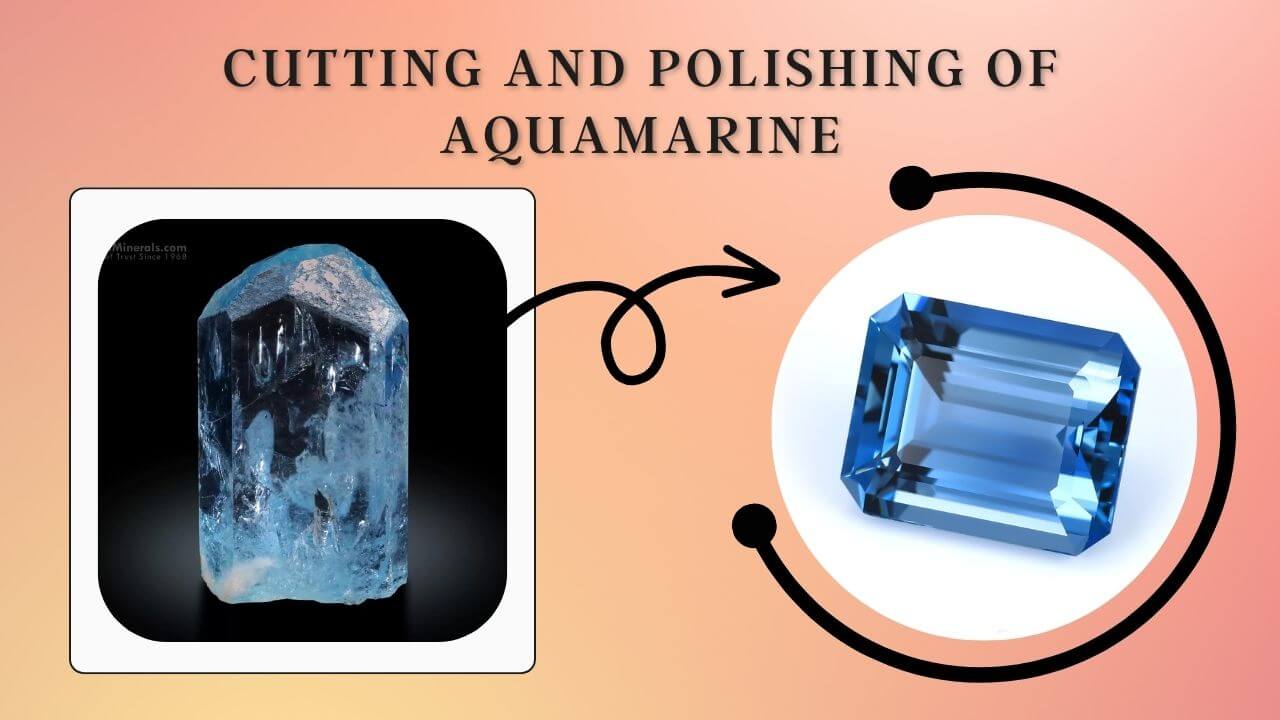

The process of cutting and shaping raw aquamarine into gemstones. The process of cutting and shaping raw aquamarine into exquisite gemstones is a captivating journey that transforms rough minerals into dazzling works of art.
Skilled lapidaries meticulously assess each raw aquamarine’s unique characteristics, considering color, clarity, and inclusions, to maximize its beauty and value.
Using precision tools and techniques, the lapidary carefully cuts the rough aquamarine into the desired shape, be it traditional cuts like emerald or brilliant cuts like oval or round.
This expertise and attention to detail create gemstones with mesmerizing facets, enhancing their brilliance and sparkle.
Next comes the polishing stage, where the gemstones undergo meticulous buffing and finishing, bringing out the gem’s luster and shine.
The result is a stunning aquamarine gemstone, radiating with the allure of the sea, destined to adorn elegant jewelry pieces that captivate hearts and add a touch of sophistication to any collection.
The fascinating artistry of cutting and polishing aquamarine gemstones not only garners admiration from gem enthusiasts but also draws visitors to discover and appreciate the captivating world of gemstone craftsmanship.
Expertise in Pakistani Lapidaries


Pakistan is renowned for its skilled lapidaries who possess exceptional expertise in cutting and polishing aquamarine gemstones.
These artisans undergo rigorous training to master the art of enhancing the beauty of raw aquamarine through precise cutting and meticulous polishing techniques.
Their expertise ensures that each aquamarine gemstone achieves its full potential, radiating with brilliance and allure.
In Pakistan, there are several famous marketplaces known for their vibrant gemstone trade but here we will discuss only one.
Namak Mandi, Peshawar, Khyber Pakhtunkhwa
Namak Mandi in Peshawar is indeed another famous market known for its gemstone and minerals trade, including aquamarine.
Located in the heart of Peshawar, Namak Mandi has a long history as a prominent gemstone and minerals market, attracting gem enthusiasts and traders from far and wide.
The market is renowned for its vast selection of gemstones, and skilled lapidaries showcase their expertise in cutting and polishing aquamarine and other precious stones.
Aquamarine minerals/gemstones from Namak Mandi Peshawar are highly regarded for their quality and beauty, contributing to Pakistan’s reputation as a significant global supplier of this captivating gem.
The bustling atmosphere and diverse gemstone offerings in Namak Mandi make it an essential destination for those seeking exquisite aquamarine gemstones in Pakistan.
Uses of Aquamarine
Different uses of aquamarine are given below:
Uses of Aquamarine in Jewelry and Fashion Industry
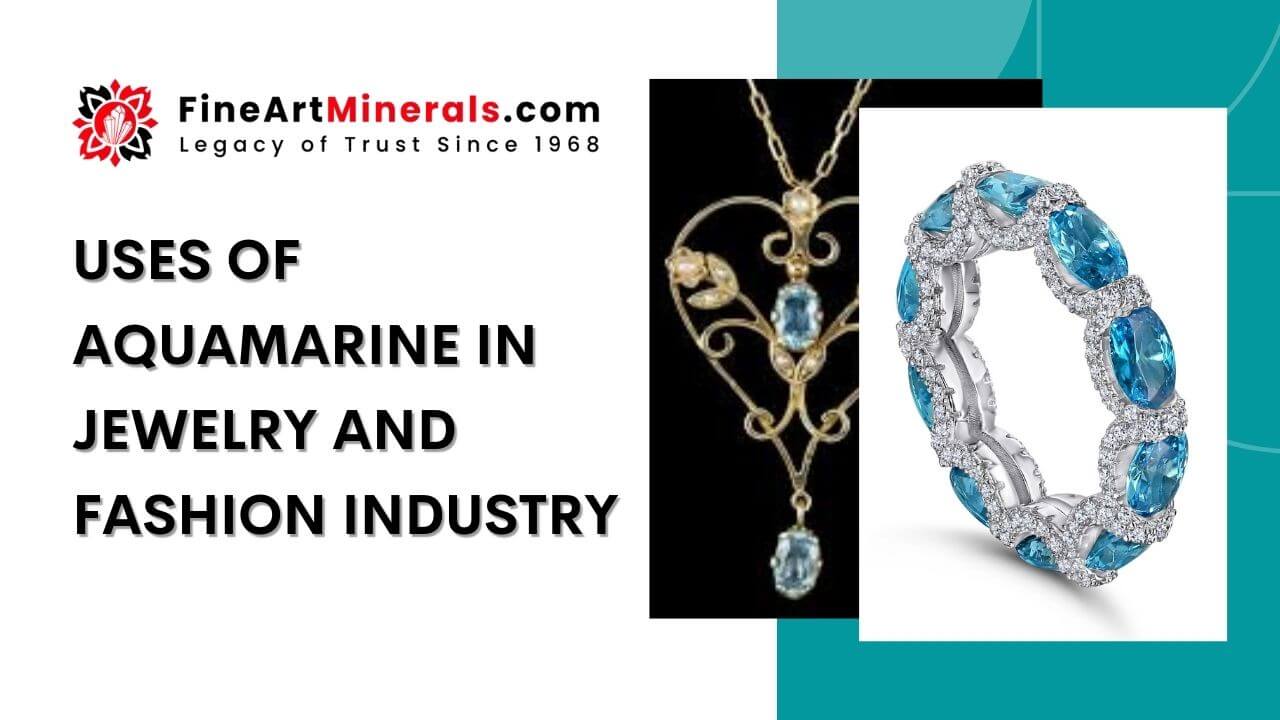

Aquamarine has earned a prominent place in the jewelry and fashion design industry, captivating designers and wearers alike with its mesmerizing beauty.
As a gemstone of the beryl family, aquamarine’s stunning blue hues, ranging from delicate pastels to deep, vivid tones, make it a favored choice for creating elegant jewelry pieces.
Its versatility allows it to be fashioned into various cuts and styles, such as classic emerald cuts, dazzling brilliant cuts, or unique cabochons, making it suitable for rings, necklaces, earrings, and bracelets.
The gem’s excellent clarity and transparency add to its allure, allowing light to dance within its depths.
Aquamarine’s popularity is not confined to traditional jewelry; it also finds its way into the fashion industry, adorning high-end couture and runway pieces.
The gem’s soothing and refreshing color complements a wide array of fashion styles, from casual to formal enhancing any ensemble with a touch of sophistication and enchantment.
The timeless appeal of aquamarine in the world of jewelry and fashion design continues to attract jewelry enthusiasts and fashion-forward individuals, making it a sought-after gemstone worldwide.
Historical Significance and Symbolism in Different Cultures
Aquamarine holds significant historical and symbolic value in various cultures worldwide. Throughout history, this enchanting gemstone has been revered for its connection to the sea and its calming properties.
In ancient times, it was believed to protect sailors and ensure safe voyages across treacherous waters. Different cultures have associated aquamarine with tranquility, hope, and spiritual healing, making it a popular choice for amulets and talismans.
The gem’s soothing blue color represents serenity and peace, making it a cherished stone for meditation and stress relief.
Today, aquamarine’s timeless symbolism continues to attract admirers, influencing jewelry design and fostering appreciation for its profound cultural significance.
Value and Market
Factors Influencing the Value of Aquamarine from Pakistan
The value of aquamarine from Pakistan is influenced by several key factors. One primary factor is the mineral color, with intense blue-green hues commanding higher prices.
Clarity is also crucial, with fewer inclusions contributing to a gem’s value. Size plays a role, as larger stones are rarer and more desirable.
The gem’s cut and craftsmanship significantly impact its value. Origin and market demand also influence pricing, with aquamarine from renowned mines like Shigar Valley and Hunza Valley holding a higher value.
Considering these factors helps determine the worth of aquamarine gemstones in Pakistan’s vibrant market.
Demand and International Trade of Pakistani Aquamarine
Demand for Pakistani aquamarine in the international market significantly influences its value. High demand from jewelry designers, collectors, and gemstone enthusiasts drives prices upward.
As Pakistani aquamarine gains recognition for its exceptional quality and captivating blue hues, its popularity surges.
The gem’s reputation for being ethically sourced and responsibly mined also boosts its value.
The increasing international trade of Pakistani aquamarine fosters economic growth and strengthens Pakistan’s position as a prominent supplier of this enchanting gemstone worldwide.
Caring for Aquamarine Jewelry
Tips on Cleaning and Maintaining Aquamarine Jewelry
Following are the tips on cleaning and maintaining Aquamarine jewelry:
Gentle Cleaning: Use a soft, damp cloth to wipe the surface of aquamarine jewelry gently. Avoid harsh chemicals or abrasive cleaners that can damage the gemstone’s surface.
Avoid Heat and Sunlight: Store aquamarine jewelry away from direct sunlight and extreme heat to prevent color fading or damage to the gemstone.
Separate Storage: Keep aquamarine jewelry in separate compartments or pouches to prevent scratching from other gemstones or metals.
Occasional Soak: For a deeper clean, soak the jewelry in warm soapy water for a few minutes, then gently brush with a soft toothbrush before rinsing.
Professional Check-ups: Periodically have your aquamarine jewelry inspected by a professional jeweler to ensure settings are secure and the gemstone is in good condition.
Best Practices for Preserving its Beauty and Durability
The following are the points for preserving the beauty and durability of Aquamarine:
Avoid Exposure to Chemicals: Keep aquamarine jewelry away from harsh chemicals, perfumes, and lotions, as they can cause damage or discoloration to the gemstone.
Remove During Activities: Take off aquamarine jewelry when engaging in rigorous activities or household chores to prevent accidental damage.
Store Separately: Store aquamarine jewelry separately in a soft pouch or lined box to prevent scratches and tangling with other pieces.
Regular Cleaning: Gently clean the jewelry with a soft cloth regularly to remove dirt and oils and maintain its brilliance.
Limit Direct Sunlight: Avoid prolonged exposure to direct sunlight or extreme temperatures, as it may lead to color fading or damage.
Professional Inspection: Have your aquamarine jewelry checked by a professional jeweler periodically to ensure settings are secure and identify any potential issues.
Conclusion
Aquamarine from Pakistan is a captivating mineral with a rich history and significant importance in both the gem industry and the country’s economy.
Its mesmerizing hues, reminiscent of the serene ocean, have made it a cherished gem among collectors and jewelry enthusiasts worldwide.
The history of Pakistan’s aquamarine can be traced back to ancient times, when it was highly valued for its beauty and believed to possess mystical properties.
Today, the mineral continues to hold cultural significance and is a source of national pride, showcasing Pakistan’s wealth of natural resources.
The value of Pakistan’s aquamarine in the global market remains consistently high, owing to its remarkable quality and unique color variations.
As one of the leading exporters of aquamarine, Pakistan plays a crucial role in satisfying the demand for this gemstone across the world.
Mines in Pakistan, particularly in the picturesque region of Gilgit-Baltistan, have been instrumental in yielding some of the finest aquamarine specimens. Miners work tirelessly to extract these precious gems from the earth, contributing to the local economy and preserving a tradition that dates back centuries.
In essence, Pakistan’s aquamarine stands as a testament to the country’s geological diversity and cultural heritage. Its allure and enduring popularity in the global market ensure that it remains a sought-after gemstone for generations to come.
So, whether you are a gem enthusiast, a jewelry connoisseur, or someone who appreciates the natural wonders of our world, exploring the aquamarine from Pakistan is sure to leave you captivated and in awe of its beauty.
So, this is the complete guide of Aquamarine from Pakistan, I hope you have gone through it. If you have any kind of questions or suggestions, feel free to ask in the comment section below:
Or
If you want any kind of minerals and gemstones you can Contact Us.
Thank you for Reading.


